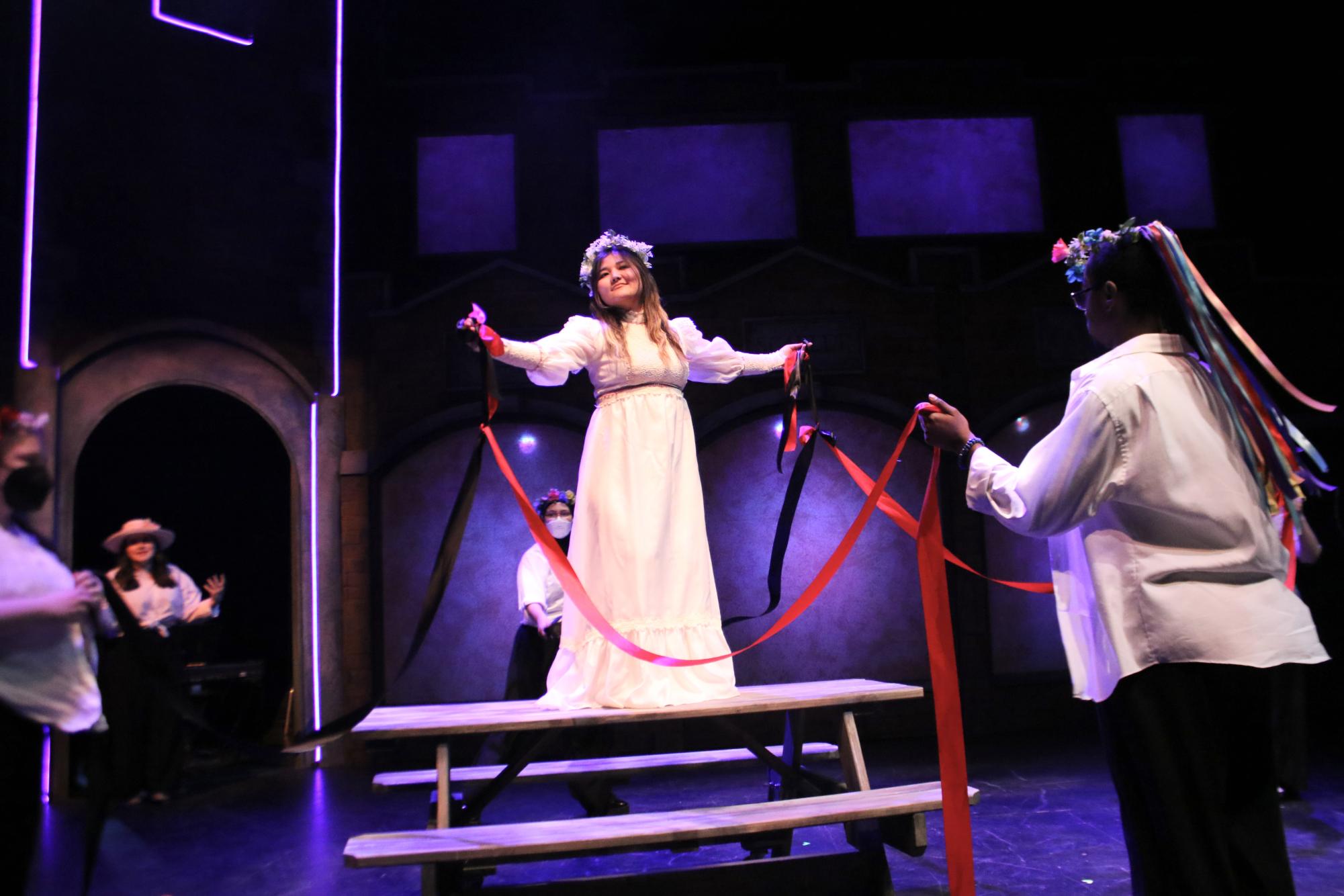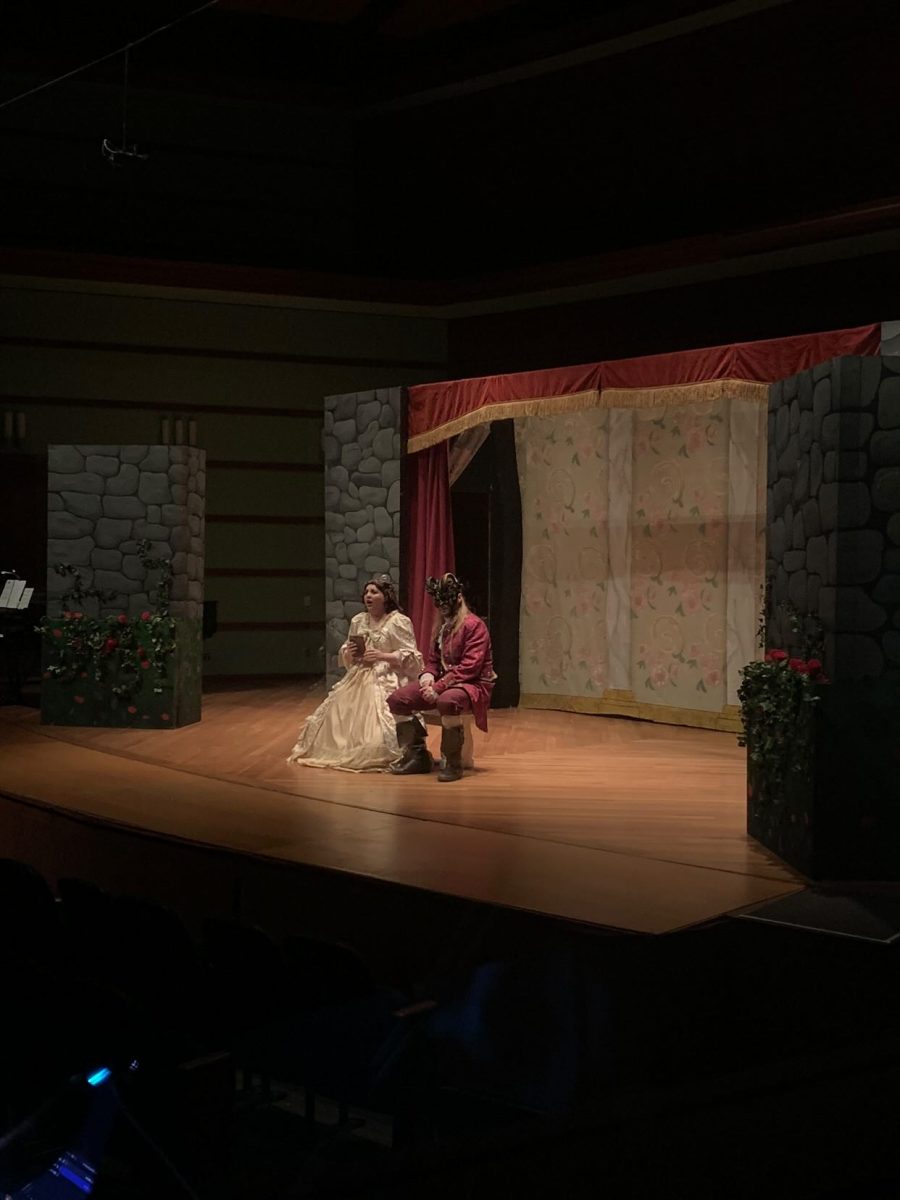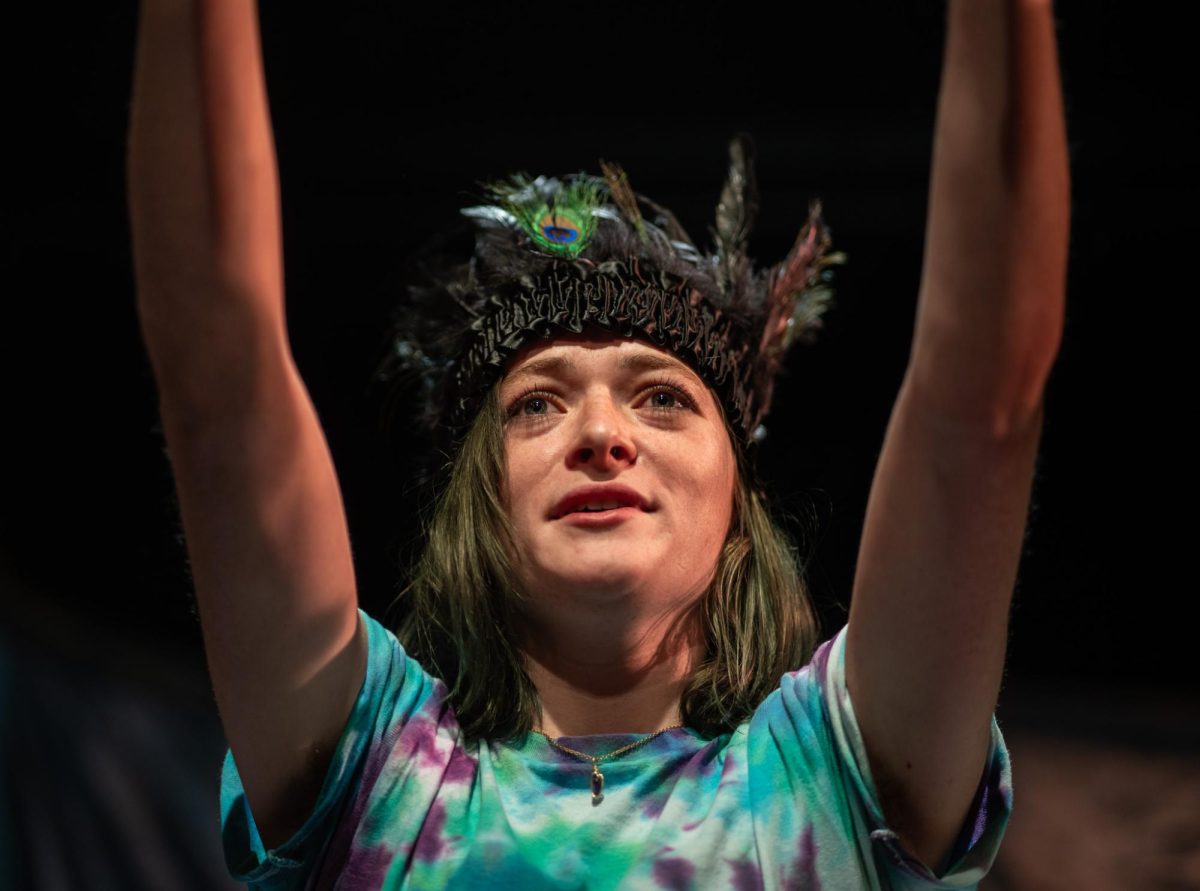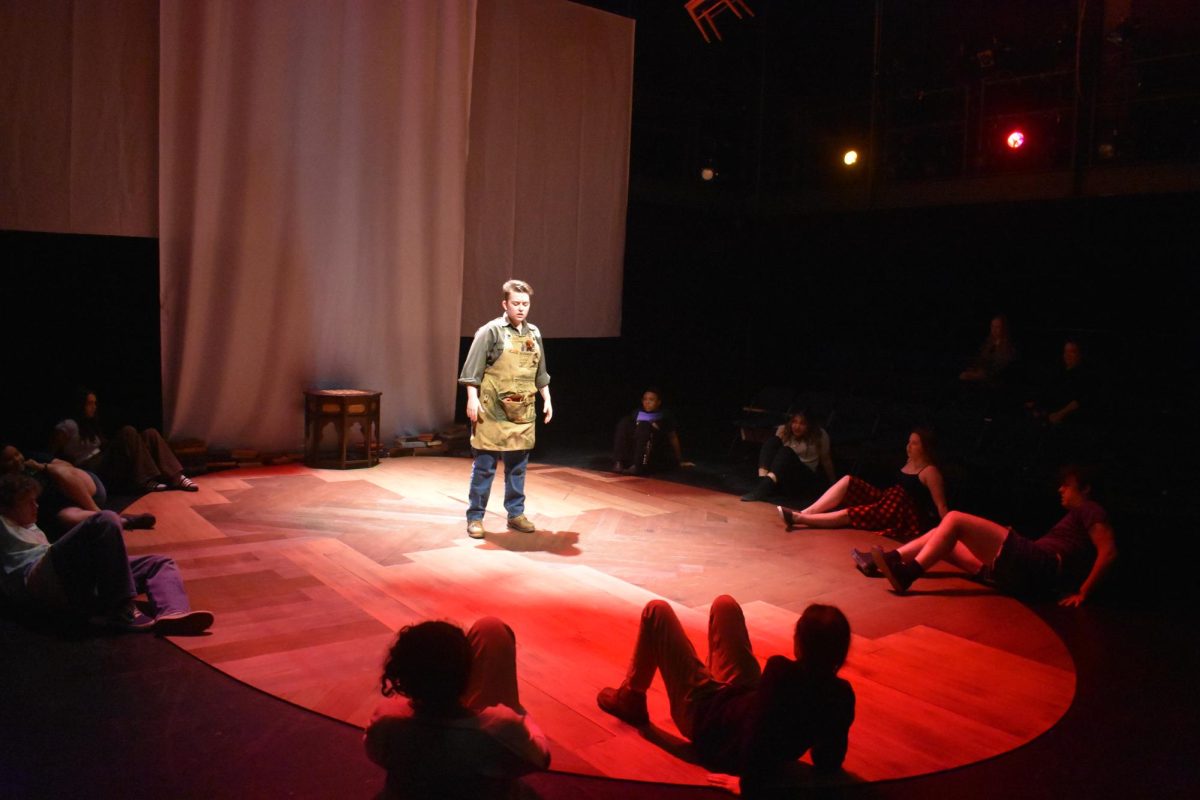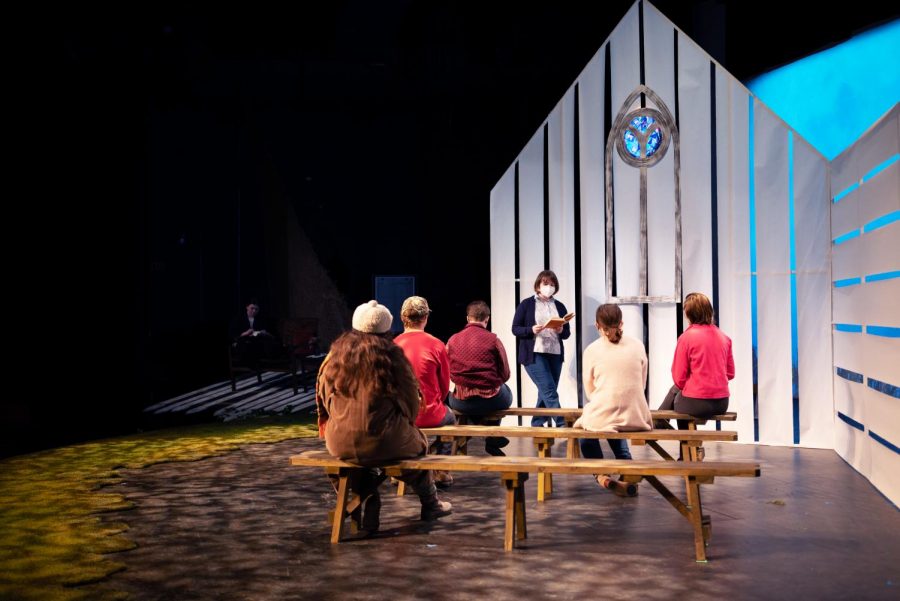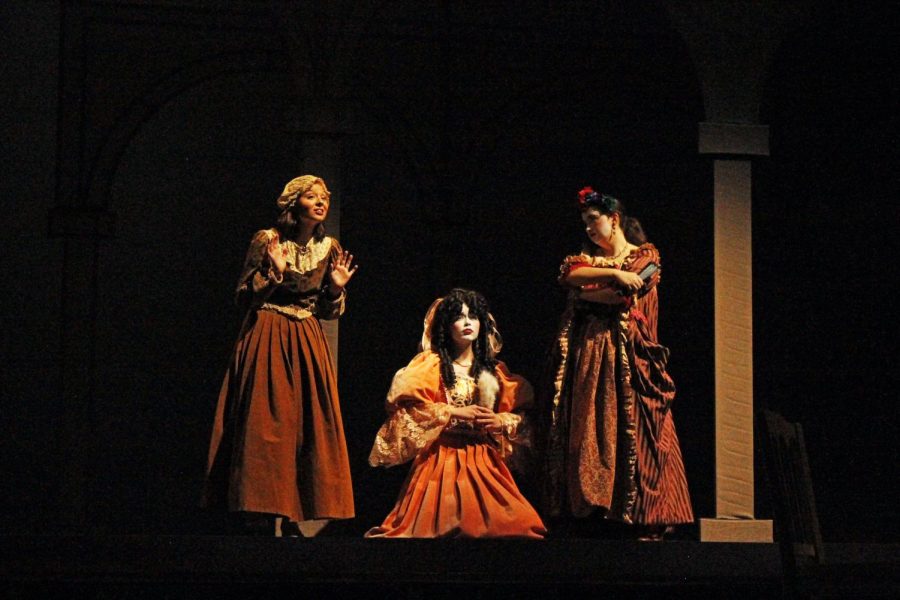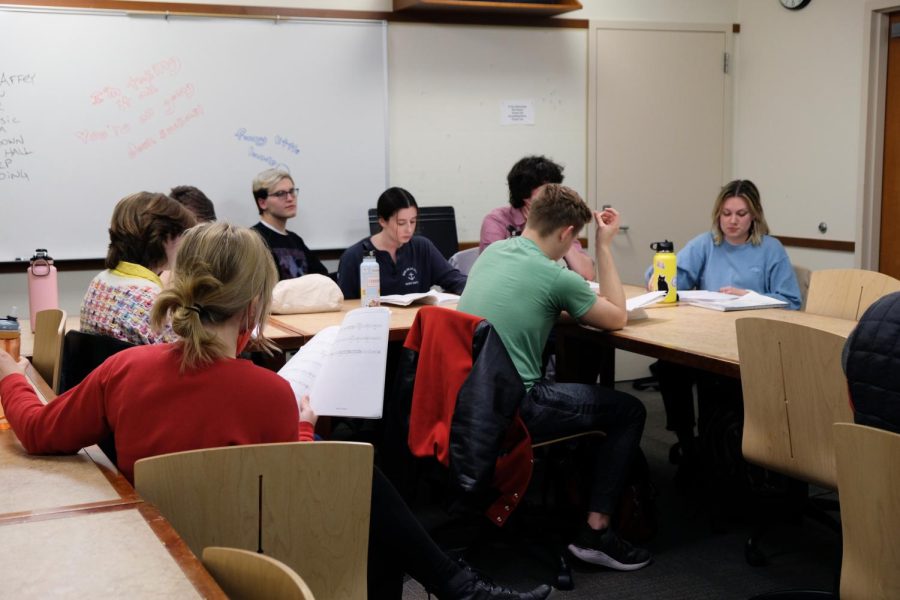Trains, squirrels, a roller skating chimpanzee, projected archival works and set pieces lit up the Bucksbaum Center for the Arts’ Flanagan Theater during its newest play, “Songs of the Scarlet and Wayback,” creating a mosaic of Grinnell’s history.
The production was a live compilation of Poweshiek County community interviews and student archival research that chronicled the pageants, parties and performances of Grinnell’s past.
“Songs of the Scarlet and Wayback” was dreamt up by Jennifer Shook, assistant professor of theater, dance and performance studies, with help from music director Andra Velis Simon and a cast of student performers, writers and researchers from Shook’s fall 2022 and spring 2024 Playwriting and Intro to Performance Studies courses.
Shook said that her inspiration for the play was the desire to feel connected to one’s place and community. She said, “A lot of my work is around making good relationships to the place that I am in as a person who has had to move around a lot, and because students are in and out so much, I know it’s hard to feel related to the place.”
In finding source material, Shook added that “the archives and Grinnell’s collective history are also a source of inspiration,” and that she was “interested in how we use archives to make those relationships, how we use stories and performance traditions of the past to build relationships in the present and for the future.”
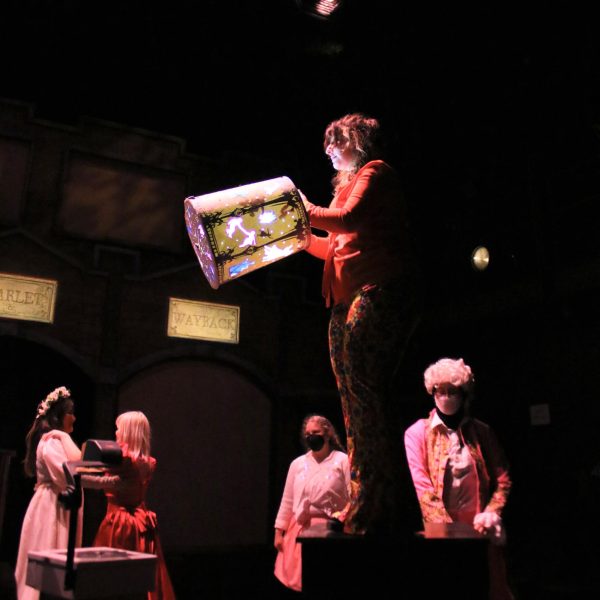
In preparation for telling Grinnell’s story, Shook took her Introduction to Performance Studies classes to do archival research on oral historical traditions in the College’s special collections and archives, Drake Library, Poweshiek Historical Preservation Project and the Grinnell Historical Museum.
Shook said, “We found these songbooks and pictures of old performances that we fell in love with and started asking, ‘how can we collaborate with the past and with people in the past ethically through performance?’” She added, “I think when we found Tony the Wonder Chimp, we knew that it was special.”
We found these songbooks and pictures of old performances that we fell in love with and started asking, “how can we collaborate with the past and with people in the past ethically through performance?”
— Jennifer Shook, Creator of 'Songs of the Scarlet and Wayback'
Caleb Elfenbein, professor of history and religious studies said, “My neighbor who grew up in Grinnell, his father was a professor, has told lots of stories about Tony. He knew all about Tony. It’s a disturbing story, but it’s fascinating. It was a chimpanzee that was abused. I mean, it drank, it smoked, it rode motorcycles and go-carts, it was crazy.”
In the production, Tony served as a segway into the second act as an eccentric bit to highlight Tiny Acres, the town’s former roller rink and social space which advertised Tony as a trained chimpanzee who would skate alongside visitors, even occasionally helping them up when they fell.
Tony quickly became one of the hot topics of the night’s show, with performer Maia DeGrazia `24 shedding light on a question many audience members were left pondering, how did the chimp die? She said matter-of-factly, “Tony was shot. Tony the chimp did not run away with the organ player. He was shot.”
“Songs of the Scarlet and Wayback” is a collaborative theater production, devised by both faculty and students. Performer Jadyn Nkosi `27 said, “We had to improv scenes to actually create the play, and then we would improve and reword the scenes until they got where they are now.” Due to the unique nature of the play, Nkosi said “At the start [of the project], there was a little bit of disorganization and franticness, trying to make sure that everything got together, but in the end, of course, like all theater productions do, it came together.”
The castmates gathered together to devise the production in the rehearsal room, a process that involved various aspects like writing portions of their own dialogue themselves and exploring archives, bridging both past and present Grinnell experiences.
“There was a lot of passion involved in exploring the more serious side of things, but also keeping them fun and lighthearted,” said performer Libby Albright `27. “It was an interesting process, but I think that the project ended up really thoughtfully navigating those topics and being something everybody can get something out of.”
When describing the creative process, Shook said, “It’s like watching an orchestra be conducted, and everyone is so focused and so good-hearted and committed to the whimsy and wonder of it. Their willingness and big hearts kept it a fun project to work on.”
The set was one of the biggest hits of the night. Grinnell College President Anne Harris said, “The sets had you looking and searching the whole time.” Shook expressed how proud she was of the “little shadow town,” designed by Lucie Greene `23, created using handmade paper that was made from donated clothes. “I just love the kind of full circle of all the ways that we are in conversation with the college and town community.”
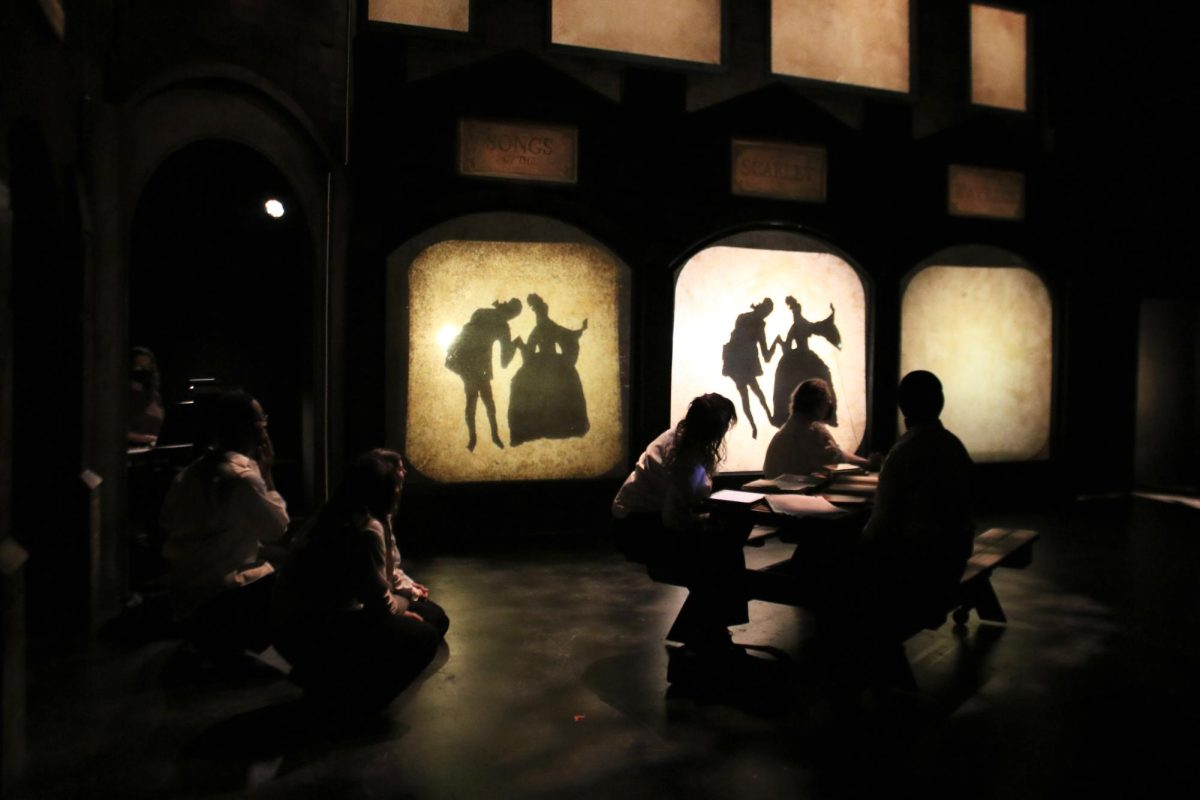
It was like a bejeweled music box made of Grinnell
— Sophie Noyes `24, Attendee
Sophie Noyes `24 said, “I thought it was fabulous. It was like a bejeweled music box made of Grinnell,” and Judd Brau `27 said, “It didn’t take itself too seriously, and was very well put together.”
Tim Dobe, professor and department chair of religious studies, saw the balcony scene shared between Nkosi and his co-actor, Levi McMillan `27, as a “beautiful, very clear, understated moment with race and gender at the front and center.”
Harris echoed Dobe’s commentary, “Yes, Iowa was the radical star, and there was a complex racial history here and so forth. There is so much to honor, that is the thing I am taking away from it.”


